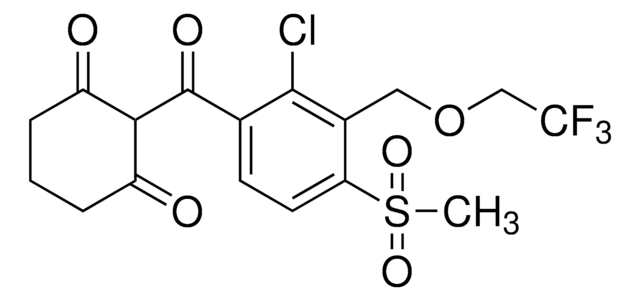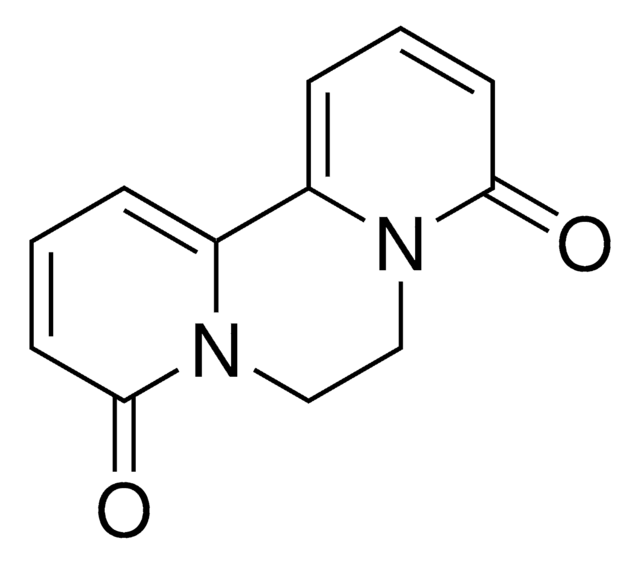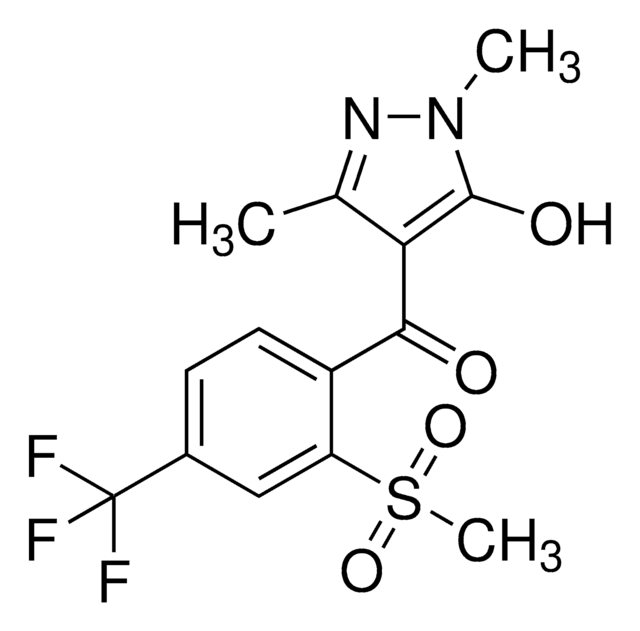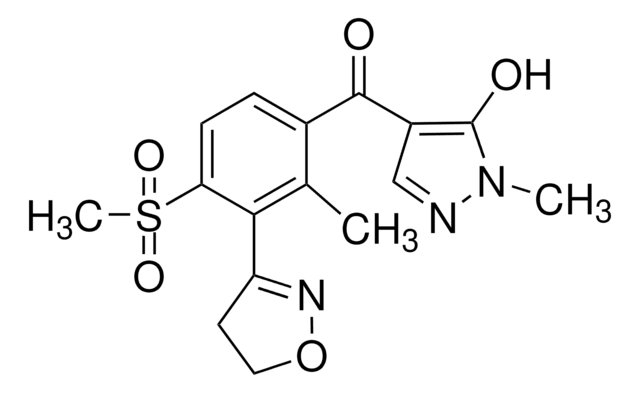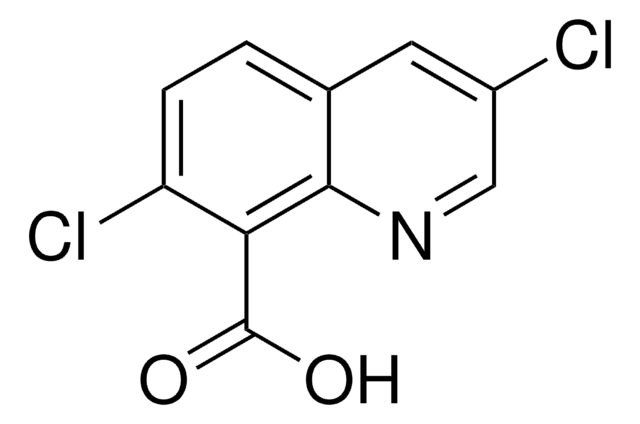46318
Sulcotrione
PESTANAL®, analytical standard
Sinónimos:
2-[2-Chloro-4-(methylsulfonyl)benzoyl]-1,3-cyclohexanedione
About This Item
Productos recomendados
grade
analytical standard
Quality Level
product line
PESTANAL®
shelf life
limited shelf life, expiry date on the label
technique(s)
HPLC: suitable
gas chromatography (GC): suitable
application(s)
agriculture
environmental
format
neat
SMILES string
CS(=O)(=O)c1ccc(c(Cl)c1)C(=O)C2C(=O)CCCC2=O
InChI
1S/C14H13ClO5S/c1-21(19,20)8-5-6-9(10(15)7-8)14(18)13-11(16)3-2-4-12(13)17/h5-7,13H,2-4H2,1H3
InChI key
PQTBTIFWAXVEPB-UHFFFAOYSA-N
¿Está buscando productos similares? Visita Guía de comparación de productos
Categorías relacionadas
General description
Application
Recommended products
Legal Information
signalword
Warning
hcodes
Hazard Classifications
Aquatic Acute 1 - Aquatic Chronic 1 - Repr. 2 - Skin Sens. 1A - STOT RE 2
Storage Class
11 - Combustible Solids
wgk_germany
WGK 2
flash_point_f
Not applicable
flash_point_c
Not applicable
ppe
dust mask type N95 (US), Eyeshields, Faceshields, Gloves
Choose from one of the most recent versions:
¿Ya tiene este producto?
Encuentre la documentación para los productos que ha comprado recientemente en la Biblioteca de documentos.
Nuestro equipo de científicos tiene experiencia en todas las áreas de investigación: Ciencias de la vida, Ciencia de los materiales, Síntesis química, Cromatografía, Analítica y muchas otras.
Póngase en contacto con el Servicio técnico